
Winter hiking: Magical or miserable?

By midwinter, our urge to hibernate can start to feel constricting instead of cozy. What better antidote to being cooped up indoors than a bracing hike in the crisp air outdoors?
Winter backdrops are stark, serene, and often stunning. With fewer people on the trail, you may spot more creatures out and about. And it’s a prime opportunity to engage with the seasons and our living planet around us, says Dr. Stuart Harris, chief of the Division of Wilderness Medicine at Massachusetts General Hospital. But a multi-mile trek through rough, frosty terrain is far different than warm-weather hiking, requiring consideration of health and safety, he notes. Here’s what to know before you go.
Winter hiking: Safety first
“The challenge of hiking when environmental conditions are a little more demanding requires a very different approach on a winter’s day as opposed to a summer’s day,” Dr. Harris says. “But it gives us a chance to be immersed in the living world around us. It’s our ancient heritage.”
A safety-first attitude is especially important if you’re hiking with others of different ages and abilities — say, with older relatives or small children. It’s crucial to have both the right gear and the right mindset to make it enjoyable and safe for all involved.
Planning and preparation for winter hikes
Prepare well beforehand, especially if you’re mixing participants with vastly different fitness levels. Plan your route carefully, rather than just winging it.
People at the extremes of age — the very old or very young — are most vulnerable to frigid temperatures, and cold-weather hiking can be more taxing on the body. “Winter conditions can be more demanding on the heart than a perfectly-temperatured day,” Harris says. “Be mindful of the physical capabilities of everyone in your group, letting this define where you go. It’s supposed to be fun, not a punishing activity.”
Before setting out:
- Know how far, high, and remote you’re going to go, Dr. Harris advises, and check the forecast for the area where you’ll be hiking, taking wind chill and speed into account. Particularly at higher altitudes, weather can change from hour to hour, so keep abreast of expectations for temperature levels and any precipitation.
- Know if you’ll have access to emergency cell coverage if anything goes wrong.
- Always share plans with someone not on your hike, including expected route and time you’ll return. Fill out trailhead registers so park rangers will also know you’re on the trail in case of emergency.
What to wear for winter hikes
Prepare for extremes of cold, wind, snow, and even rain to avoid frostbite or hypothermia, when body temperature drops dangerously low.
- Dress in layers. Several thin layers of clothing are better than one thick one. Peel off a layer when you’re feeling warm in high sun and add it back when in shadow. Ideally, wear a base layer made from wicking fabric that can draw sweat away from the skin, followed by layers that insulate and protect from wind and moisture. “As they say, there’s no bad weather, just inappropriate clothing,” Dr. Harris says. “Take a day pack or rucksack and throw a couple of extra thermal layers in. I never head out for any hike without some ability to change as the weather changes.”
- Protect head, hands, and feet. Wear a wool hat, a thick pair of gloves or mittens, and two pairs of socks. Bring dry spares. Your boots should be waterproof and have a rugged, grippy sole.
- Wear sunscreen. You can still get a sunburn in winter, especially in places where the sun’s glare reflects off the snow.
Carry essentials to help ensure safety
- Extra food and water. Hiking in the cold takes serious energy, burning many more calories than the same activity done in summer temperatures. Pack nutrient-dense snacks such as trail mix and granola bars, which often combine nuts, dried fruit, and oats to provide needed protein, fat, and calories. It’s also key to stay hydrated to keep your core temperature normal. Bonus points for bringing a warm drink in a thermos to warm your core if you’re chilled.
- First aid kit. Bandages for slips or scrapes on the trail and heat-reflecting blankets to cover someone showing signs of hypothermia are wise. Even in above-freezing temperatures, hypothermia is possible. Watch for signs such as shivering, confusion, exhaustion, or slurring words, and seek immediate help.
- Light source. Time your hike so you’re not on the trail in darkness. But bring a light source in case you get stuck. “A flashlight or headlamp is pretty darn useful if you’re hiking anywhere near the edges of daylight,” Harris says.
- Phone, map, compass, or GPS device plus extra batteries. Don’t rely on your phone for GPS tracking, but fully charge it in case you need to reach someone quickly. “Make sure that you have the technology and skill set to be able to navigate on- or off-trail,” Harris says, “and that you have a means of outside communication, especially if you’re in a large, mixed group.”
About the Author

Maureen Salamon, Executive Editor, Harvard Women's Health Watch
Maureen Salamon is executive editor of Harvard Women’s Health Watch. She began her career as a newspaper reporter and later covered health and medicine for a wide variety of websites, magazines, and hospitals. Her work has … See Full Bio View all posts by Maureen Salamon

How well do you score on brain health?

Need another jolt of motivation to shore up a resolution to shed weight, sleep more soundly, boost nutrition or exercise levels, or cut back on alcohol? Then you'll be pleased to learn that any (and all) of these efforts can also add up to better brain health.
An international study led by researchers at the McCance Center for Brain Health at Massachusetts General Hospital devised and validated a Brain Care Score (BCS) card that makes it easy to total up what you're doing well and where you might do better. The prize is a healthier brain — specifically a lower risk for dementia and strokes.
Designed to predict how current habits might impact future brain health, the user-friendly scorecard is apparently the first of its kind, says Dr. Andrew Budson, a lecturer in neurology at Harvard Medical School.
"It's a real service that the researchers have developed a scale like this and completed the first study to determine if scoring worse on this scale raises your risk for dementia and stroke," says Dr. Budson, who wasn't involved in the analysis. "On one hand, no one's done something quite like this before. On the other, however, it's really wrapping together health factors everyone has known for a number of years in new packaging."
What's included on the scorecard?
Called the McCance Brain Care Score, the card tallies points from 12 physical, lifestyle, and social-emotional domains.
Physical components relate to
- blood pressure
- blood sugar
- cholesterol
- body mass index (BMI).
Lifestyle components include
- nutrition
- alcohol intake
- smoking
- aerobic activities
- sleep.
Social-emotional factors inquire about
- stress management
- social relationships
- meaning in life.
Each response is given a score of 0, 1, or 2, with the highest possible score totaling 21. Higher scores suggest better brain care.
"All these physical and lifestyle factors can contribute to the risk of dementia to some extent through strokes," Dr. Budson says. "Those that aren't a risk through strokes are usually related to the fact that a healthy brain is a brain that's using all of its parts. Engaging in healthy relationships and meaningful activities helps us maintain good brain structure and function."
What did the analysis involve?
The study was published online in Frontiers of Neurology in December 2023. It involved nearly 399,000 adults ages 40 through 69 (average age 57; 54% women) who contributed personal health information to the UK Biobank.
During an average follow-up period of 12.5 years, participants recorded 5,354 new cases of dementia and 7,259 strokes. Researchers found that participants with higher Brain Care Scores at the study's start had lower risks of developing dementia or strokes over time.
These threats to health and independence take a stunning — and growing — toll on people in the US. Dementia affects one in seven Americans, a rate expected to triple by 2050. Meanwhile, more than 795,000 people in the United States suffer a stroke each year, according to the CDC.
What did the study find?
Each five-point step higher in the BCS rating assigned when the study began was linked to significantly lower risks of dementia and stroke, with those odds varying by age group:
- Participants younger than 50 at the study's start were 59% less likely to develop dementia and 48% less likely to have a stroke with each five-point higher score on BCS.
- Participants 50 through 59 at the study's start were 32% less likely to develop dementia and 52% less likely to have a stroke with each five-point higher score on BCS.
But those brain disease benefits appeared to diminish for those older than 59 at the study's start. This group experienced only 8% lower odds of dementia and a 33% lower risk of stroke with each five-point higher score on BCS. Study authors theorized that some of these participants may have already been experiencing early dementia, which is difficult to detect until it progresses.
"I feel very comfortable that the study's conclusions are entirely correct, because all the factors that go into its BCS are well-known things people can do to reduce their risk of stroke and dementia," Dr. Budson says.
What are the study's limitations?
However, Dr. Budson notes that the study did have a couple of limitations,. The UK Biobank fell just short of collecting all the components of the BCS in its dataset, lacking meaning-of-life questions. So its scores ranged from 0 to 19, not up to 21. "It's a practical limitation, but it should be acknowledged that so far, there have been no studies to validate the actual 21-point scale they're recommending we use," he says.
The analysis also evaluated participants' scores at just one point in time instead of several, Dr. Budson says. Future research should determine whether people can lower their stroke and dementia risk by improving their BCS over time with behavior and lifestyle changes.
How can you play this game at home?
While better brain health may be the clear prize of a higher score, it's far from the only benefit. That's because improving any health component of the BCS also benefits our overall well-being.
"By improving these factors, not only will people help their brain, but they'll also help their heart and reduce their risk of cancer," Dr. Budson adds. "These factors will absolutely also improve your psychological health, which is certainly an important part of brain health."
The scale's simple breakdown of health factors also makes it easy to focus on tweaking one or two without getting overwhelmed.
"Let's say someone's nutrition isn't perfect — and they know it — but they're not willing to change their diet. Fine. They can then decide to do more aerobic exercise, for example, or to stop drinking, or to get the sleep their body needs," he says.
What one change could put you on a path to better brain health?
If he had to choose just one factor to improve brain health, Dr. Budson would focus on meaning of life, "which means you generally feel your life has meaning or purpose," he says. To do that, he suggests giving deep, quiet thought to what you wish your life's purpose to be, whether you expect to live a long time or just a few years.
"Once you have a purpose, then you have a reason to follow through with assessing all the other items on the BCS scale and seeing what you can do so you'll be around longer, and be competent and capable longer, to help fulfill the meaning and purpose of your life," he says.
About the Author

Maureen Salamon, Executive Editor, Harvard Women's Health Watch
Maureen Salamon is executive editor of Harvard Women’s Health Watch. She began her career as a newspaper reporter and later covered health and medicine for a wide variety of websites, magazines, and hospitals. Her work has … See Full Bio View all posts by Maureen Salamon
About the Reviewer

Howard E. LeWine, MD, Chief Medical Editor, Harvard Health Publishing
Dr. Howard LeWine is a practicing internist at Brigham and Women’s Hospital in Boston, Chief Medical Editor at Harvard Health Publishing, and editor in chief of Harvard Men’s Health Watch. See Full Bio View all posts by Howard E. LeWine, MD
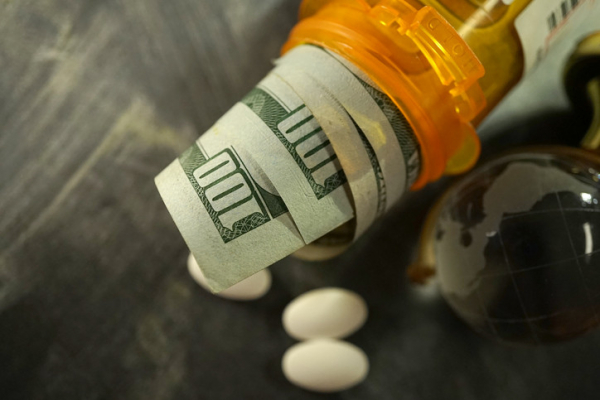
Why do your prescription drugs cost so much?

I was in line at a pharmacy recently as the customer ahead of me was picking up her prescription. The pharmacist matter-of-factly said: “that’ll be $850.” All she could say was “really?” She left without her prescription, telling the pharmacist she’d have to call her doctor about a less costly alternative.
Many of us routinely experience sticker shock over drug costs. And ever more dramatic examples suggest there’s no limit. So, let’s talk about ways to minimize what we spend on prescription drugs; how we got to this juncture where some medicines cost more than a million dollars per dose; and what changes are needed in our pricey medication-industrial-complex.
7 ways to minimize your spending on prescription drugs
Consider these seven strategies to pare drug costs. Savings will vary depending on insurance, donut holes, deductibles, and cost-sharing.
- Ask your healthcare provider three questions: Is every medicine you take truly necessary? Is it safe to reduce the dose of any medicines you take? Could a lower-cost or generic drug be substituted?
- If you have health insurance, check the list of preferred medications (the formulary), which tend to cost less than other similar medicines.
- Split pills: In some cases, a prescription will cost less if each pill contains more than your needed dose and can be divided. For example, if you usually take a 25-mg pill, taking half of a 50-mg pill may help you save on drug costs and copays. Ask your pharmacist if the math works for you.
- Ask if a 90-day supply rather than a 30-day supply would reduce copays.
- Look for prescription drug discount programs that offer savings. Restrictions apply and availability varies by location. Also, paying through a discount program might not count toward your insurance deductible or maximum out-of-pocket costs, so it isn’t always less expensive to use these programs.
- Compare prices at different pharmacies and review your options with a pharmacist. Sometimes the price is lower if you don’t use your insurance.
- Consider using an online mail-order service (such as Blink Health or Cost Plus Drug Company). However, spending through these sites may not count toward your insurance deductible. And the prices are not always lower online.
These measures will help some people more than others and can take up a lot of time. The sad truth is that even if you did everything you could, the impact on your wallet might be small.
Why are medicine costs so high in the US?
My top five contenders are:
Drug makers’ profit motive. Pharmaceutical companies routinely reject this idea. They say it’s expensive to develop new drugs and run the required clinical trials to prove safety and effectiveness. Many promising drugs fail, and the FDA drug approval process is difficult and costly.
Yet one recent study published in JAMA Network Open found no connection between how much a drug company spends on research and development (R&D) for a drug and the drug’s price. Even after accounting for R&D spending, most of the top 30 pharmaceutical companies make billions of dollars in profit. And in Europe, where drug prices are negotiated, the very same drugs made by the same companies for the same health problems typically cost far less than in the US.
Pharmacy benefit managers (PBMs) handle drug benefits for large employers, Medicare, and health insurance companies. PBMs negotiate prices with health insurers and pharmacies. They help decide which drugs to cover and how much patients pay. Their fees and incentives — often a share of total spending on medicines, which might encourage approval of higher-priced drugs — contribute to the costs health consumers wind up paying. A flurry of state and federal legislation is intended to limit what PBMs can do and the transparency of their operations.
Cost-sharing. In recent years, insurers have increasingly shifted costs to patients through higher copays, deductibles, and premiums. Sometimes this is justified by the notion that this incentivizes patients to seek care only when truly necessary; of course, it could also discourage people from seeking care even when warranted.
Legal maneuvers. Many drug makers file numerous patents and sue potential competitors to extend their time holding a monopoly on a particular drug (see example). Or they create “me too” drugs by slightly tweaking an existing drug so they can patent it as a brand-new drug. Some pharmaceutical companies acquire patents for older drugs and then jack up the price. Others have bought or merged with another drugmaker to avoid price competition.
Direct-to-consumer advertising. Drug companies spend billions on ads (nearly $8.1 billion in 2022). Marketing costs raise the price of drugs while boosting demand for newer, heavily promoted drugs. Advertised drugs tend to be far more expensive (and not always better) than older drugs. Perhaps this is why such advertising is banned in most other countries.
What might slow rising drug costs?
Although prescription drug prices are likely to remain high for the foreseeable future, three developments could help slow rising drug prices in the coming years:
- The Inflation Reduction Act of 2022 allows the US government to negotiate drug prices for Medicare, which is expected to lower drug costs. The first 10 price-protected drugs — including the blood thinner apixaban (Eliquis) and the diabetes medicine sitagliptin (Januvia) — take effect in 2026. More drugs will be added to this list each year. If you’re on one of these drugs, the impact could be large. But with more than 20,000 approved drugs on the market, it’s not a solution that will help everyone.
- Recent FDA action allowing Florida to import drugs from Canada, and other proposed federal and state legislation aiming to protect people from high prescription drug prices.
- Organizations advocating for lower prescription drug prices, including AARP, Consumers Union, and Patients for Affordable Drugs, appear to have the attention of lawmakers as never before.
The bottom line
Let’s face it: our complex, broken healthcare system incentivizes those who develop and distribute drugs to set the prices well above what many can afford. And the amount you can chip away on your own is limited. What we really need is an overhaul to remove middlemen who contribute to added cost without always adding value.
Until we get there, do what you can, even if the impact is small. Trying your best to stay healthy could be the most important step you take. After all, the best way to limit how much you spend on prescription drugs is to have no reason to take them.
About the Author

Robert H. Shmerling, MD, Senior Faculty Editor, Harvard Health Publishing; Editorial Advisory Board Member, Harvard Health Publishing
Dr. Robert H. Shmerling is the former clinical chief of the division of rheumatology at Beth Israel Deaconess Medical Center (BIDMC), and is a current member of the corresponding faculty in medicine at Harvard Medical School. … See Full Bio View all posts by Robert H. Shmerling, MD

Shining light on night blindness

Animals renowned for their outstanding night vision include owls, cats, tarsiers (a tiny primate in Southeast Asia) — and even the dung beetle.
But humans? Not so much.
Over time, many people suffer from night blindness, also known as nyctalopia. This condition makes seeing in dim or dark settings difficult because your eyes cannot adjust to changes in brightness or detect light.
What are the dangers for those experiencing night blindness?
Night blindness is especially problematic and dangerous when driving. Your eyes cannot adjust between darkness and the headlights of oncoming vehicles, other cars may appear out of focus, and your depth perception becomes impaired, which makes it difficult to judge distances.
Night blindness also may affect your sight at home by making it hard for your vision to quickly adjust to a dark room after turning off the lights. “This can cause people to bump into furniture or trip and suffer an injury,” says Dr. Isabel Deakins, an optometrist with Harvard-affiliated Massachusetts Eye and Ear.
What happens in the eye to create night blindness?
The ability to see in low-light conditions involves two structures in the eye: the retina and the iris.
The retina, located in the back of the eye, contains two types of light-detecting cells called cones and rods. The cones handle color vision and fine details while the rods manage vision in dim light.
The iris is the colored part of your eye. It contains muscles that widen or narrow the opening of your pupil to adjust how much light can enter your eyes.
If your irises don’t properly react, the pupils can dilate and let in too much light, which causes light sensitivity and makes it hard to see in bright light. Or your pupils may remain too small and not allow in enough light, making it tough to see in low light.
What causes night blindness?
Night blindness is not a disease but a symptom of other conditions. “It’s like having a bruise on your body. Something else causes it,” says Dr. Deakins.
Several conditions can cause night blindness. For instance, medications, such as antidepressants, antihistamines, and antipsychotics, can affect pupil size and how much light enters the eye.
Eye conditions that can cause night blindness include:
- glaucoma, a disease that damages the eye’s optic nerves and blood vessels
- cataracts, cloudy areas in the lens that distort or block the passage of light through the lens
- dry eye syndrome.
However, one issue that raises the risk of night blindness that you can’t control is age. “Our eyes react more slowly to light changes as we age, and vision naturally declines over time,” says Dr. Deakins. “The number of rods in our eyes diminish, pupils get smaller, and the muscles of the irises weaken.”
What helps if you have night blindness?
If you notice any signs of night blindness, avoid driving and get checked by an eye care specialist like an optometrist or ophthalmologist. An eye exam can determine if your eyeglass prescription needs to be updated.
“Often, a prescription change is enough to reduce glare when driving at night," says Dr. Deakins. “You may even need separate glasses with a stronger eye prescription that you wear only when driving at night.”
Adding an anti-reflective coating to your lens may help to cut down on the glare of the headlights of an oncoming car. However, skip the over-the-counter polarized driving glasses sold at many drug stores. "These may help cut down on glare, but they don't address the causes of night blindness," says Dr. Deakins.
An eye exam also will identify glaucoma or cataracts, which can be treated. Glaucoma treatments include eyedrops, laser treatment, or surgery. Cataracts are corrected with surgery to replace the clouded lens with an artificial one. Your eye care specialist can also help identify dry eye and recommend treatment.
Ask your primary care clinician or a pharmacist if any medications that you take may cause night blindness. If so, it may be possible to adjust the dose or switch to another drug.
Three more ways to make night driving safer
You also can take steps to make night driving safer. For example:
- Wash the lenses of your glasses regularly. And take them to an optician to buff out minor scratches.
- Keep both sides of your front and rear car windshields clean so that you can see as clearly as possible.
- Dim your dashboard lights, which cause glare, and use the night setting on your rearview mirror.
About the Author

Matthew Solan, Executive Editor, Harvard Men's Health Watch
Matthew Solan is the executive editor of Harvard Men’s Health Watch. He previously served as executive editor for UCLA Health’s Healthy Years and as a contributor to Duke Medicine’s Health News and Weill Cornell Medical College’s … See Full Bio View all posts by Matthew Solan
About the Reviewer
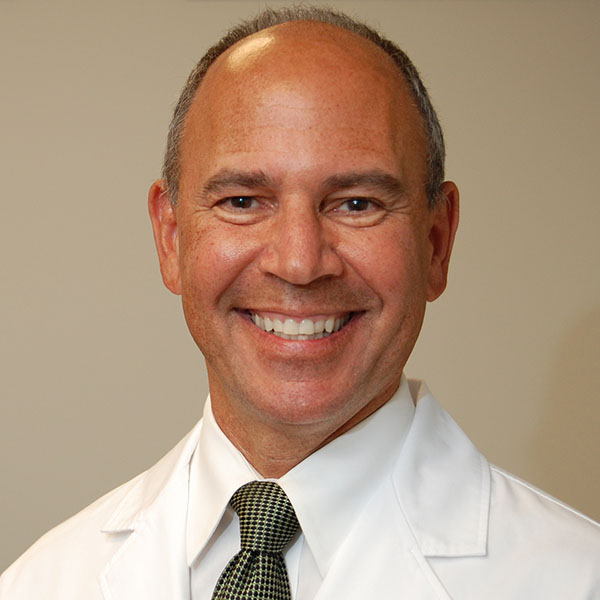
Howard E. LeWine, MD, Chief Medical Editor, Harvard Health Publishing
Dr. Howard LeWine is a practicing internist at Brigham and Women’s Hospital in Boston, Chief Medical Editor at Harvard Health Publishing, and editor in chief of Harvard Men’s Health Watch. See Full Bio View all posts by Howard E. LeWine, MD

The art of a heartfelt apology

If you’ve been stuck mostly at home with one or more family members over the past year, chances are you’ve gotten on one another’s nerves occasionally. When you’re under a lot of stress, it’s not uncommon say something unkind, or even to lash out in anger to someone you care about. And we all make thoughtless mistakes from time to time, like forgetting a promise or breaking something.
Not sure if you should apologize?
Even if you don’t think what you said or did was so bad, or believe that the other person is actually in the wrong, it’s still important to apologize when you’ve hurt or angered someone. “To preserve or re-establish connections with other people, you have to let go of concerns about right and wrong and try instead to understand the other person’s experience,” says Dr. Ronald Siegel, assistant professor of psychology at Harvard Medical School. That ability is one of the cornerstones of emotional intelligence, which underlies healthy, productive relationships of all types.
How to apologize genuinely
For an apology to be effective, it has to be genuine. A successful apology validates that the other person felt offended, and acknowledges responsibility (you accept that your actions caused the other person pain). You want to convey that you truly feel sorry and care about the person who was hurt, and promise to make amends, including by taking steps to avoid similar mishaps going forward as in the examples below.
According to the late psychiatrist Dr. Aaron Lazare, an apology expert and former chancellor and dean of the University of Massachusetts Medical School, a good apology has four elements:
- Acknowledge the offense. Take responsibility for the offense, whether it was a physical or psychological harm, and confirm that your behavior was not acceptable. Avoid using vague or evasive language, or wording an apology in a way that minimizes the offense or questions whether the victim was really hurt.
- Explain what happened. The challenge here is to explain how the offense occurred without excusing it. In fact, sometimes the best strategy is to say there is no excuse.
- Express remorse. If you regret the error or feel ashamed or humiliated, say so: this is all part of expressing sincere remorse.
- Offer to make amends. For example, if you have damaged someone’s property, have it repaired or replace it. When the offense has hurt someone’s feelings, acknowledge the pain and promise to try to be more sensitive in the future.
Making a heartfelt apology
The words you choose for your apology count. Here are some examples of good and bad apologies.
|
EFFECTIVE WORDING |
WHY IT WORKS |
|
“I’m sorry I lost my temper last night. I’ve been under a lot of pressure at work, but that’s no excuse for my behavior. I love you and will try harder not to take my frustrations out on you.” |
Takes responsibility, explains but does not excuse why the mistake happened, expresses remorse and caring, and promises reparation. |
|
“I forgot. I apologize for this mistake. It shouldn’t have happened. What can I do to avoid this problem in the future?” |
Takes responsibility, describes the mistake, makes the person feel cared for, and begins a conversation about how to remedy the error. |
|
INEFFECTIVE WORDING |
WHY IT WON’T WORK |
|
“I apologize for whatever happened.” |
Language is vague; offense isn’t specified. |
|
“Mistakes were made.” |
Use of passive voice avoids taking responsibility. |
|
“Okay, I apologize. I didn’t know this was such a sensitive issue for you.” |
Sounds grudging, thrusts the blame back on to the offended person (for “sensitivity”). |
About the Author

Julie Corliss, Executive Editor, Harvard Heart Letter
Julie Corliss is the executive editor of the Harvard Heart Letter. Before working at Harvard, she was a medical writer and editor at HealthNews, a consumer newsletter affiliated with The New England Journal of Medicine. She … See Full Bio View all posts by Julie Corliss
About the Reviewer
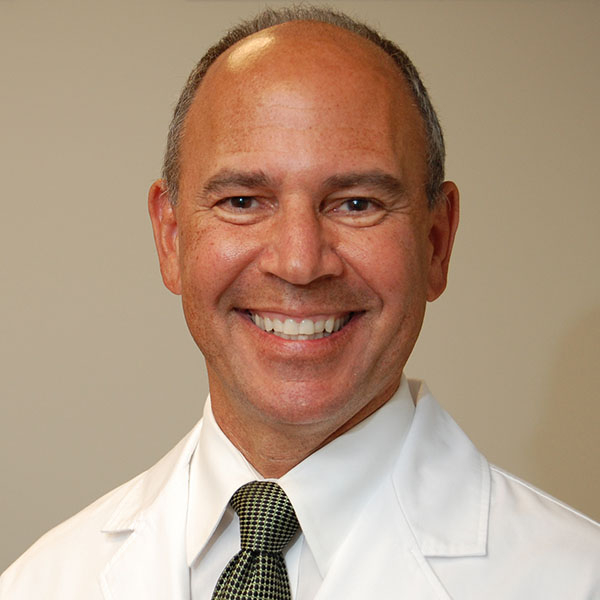
Howard E. LeWine, MD, Chief Medical Editor, Harvard Health Publishing
Dr. Howard LeWine is a practicing internist at Brigham and Women’s Hospital in Boston, Chief Medical Editor at Harvard Health Publishing, and editor in chief of Harvard Men’s Health Watch. See Full Bio View all posts by Howard E. LeWine, MD
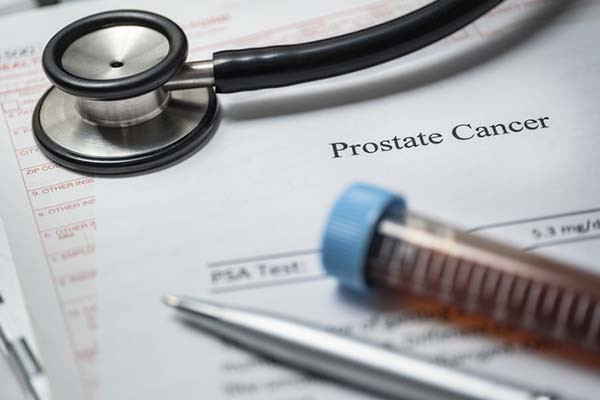
New research shows little risk of infection from prostate biopsies

Infections after a prostate biopsy are rare, but they do occur. Now research shows that fewer than 2% of men develop confirmed infections after prostate biopsy, regardless of the technique used.
In the United States, doctors usually thread a biopsy needle through the rectum and then into the prostate gland while watching their progress on an ultrasound machine. This is called a transrectal ultrasound-guided biopsy (TRUS). Since the biopsy needle passes through the rectum, there's a chance that fecal bacteria will be introduced into the prostate or escape into the bloodstream. For that reason, doctors typically treat a patient with antibiotics before initiating the procedure.
Alternatively, the biopsy needle can be passed through the peritoneum, which is a patch of skin between the anus and the base of the scrotum. These transperitoneal prostate (TP) biopsies, as they are called, are also performed with ultrasound guidance, and since they bypass the rectum, antibiotics typically aren't required. In that way, TP biopsies help to keep antibiotic resistance at bay, and European medical guidelines strongly favor this approach, citing a lower risk of infection.
Study goals and methodology
TP biopsies aren't widely adopted in the United States, in part because doctors lack familiarity with the method and need further training to perform it. The technology is steadily improving, and TP biopsies are increasingly being conducted in office settings around the country. But questions remain about how TRUS and TP biopsies compare in terms of their infectious complications.
To investigate, researchers at Albany Medical Center in New York conducted the first-ever randomized clinical trial comparing infection risks associated with either method. The results were published in February in the Journal of Urology.
The Albany team randomized 718 men to either a TRUS or TP biopsy. Nearly all the men who got a TRUS biopsy (and with few exceptions, none of the TP-treated men) first received a single-day course of antibiotics. All the biopsies were administered between 2019 and 2022 by three urologists working at the Medical Center's affiliated and nonaffiliated hospitals.
The men were then monitored for fever, genitourinary infections, antibiotic prescriptions for suspected or confirmed infections, sepsis, and infection-related contacts with caregivers. Researchers collected data during a visit conducted two weeks after a biopsy procedure, and then by phone over an additional 30-day period following this initial meeting.
What the researchers found
According to the results, 1.1% of men in the TRUS group and 1.4% of men in the transperineal group wound up with confirmed infections. The difference was not statistically significant. If "possible" infections were counted (for example, antibiotic prescriptions for fever), then the rates increased to 2.6% and 2.7% of men in the TRUS and TP groups, respectively.
Fever was the most frequent complication, reported by six participants in each group. One participant from each group also developed noninfectious urinary retention, requiring the temporary use of a catheter. None of the men developed sepsis or required post-biopsy treatments for bleeding.
The study had some limitations: Nearly all the participants were white, and so the results may not be applicable to men from other racial and ethnic groups. Furthermore, since all the men were biopsied by a single institution, it's unclear if the findings are generalizable in other settings. Still, the study provides reassuring evidence that both types of biopsies "appear safe and viable options for clinical practice," the authors concluded.
Commentary from experts
"The paper provides needed evidence that TP biopsies without antibiotics are about as safe and efficacious as TRUS biopsies with antibiotics," said Dr. Marc Garnick, the Gorman Brothers Professor of Medicine at Harvard Medical School and Beth Israel Deaconess Medical Center. The findings also help to dispel a growing view that transperineal biopsies are superior, Dr. Garnick pointed out.
"Recent years have witnessed a marked interest and surge in the transperineal approach, primarily driven by early studies suggesting a lower risk of infectious complications compared with transrectal biopsy," said Dr. Boris Gershman, a urologist at Harvard-affiliated Beth Israel Deaconess Medical Center in Boston, and a member of Harvard Health Publishing's Annual Report on Prostate Diseases advisory board.
"Interestingly, the investigators find no difference in infectious complications, and it will be important to see if other ongoing studies report similar results," Dr. Gershman continued. "In addition to safety, we also need to confirm whether there are any meaningful differences between the two approaches with respect to cancer detection rates."
About the Author

Charlie Schmidt, Editor, Harvard Medical School Annual Report on Prostate Diseases
Charlie Schmidt is an award-winning freelance science writer based in Portland, Maine. In addition to writing for Harvard Health Publishing, Charlie has written for Science magazine, the Journal of the National Cancer Institute, Environmental Health Perspectives, … See Full Bio View all posts by Charlie Schmidt
About the Reviewer

Marc B. Garnick, MD, Editor in Chief, Harvard Medical School Annual Report on Prostate Diseases; Editorial Advisory Board Member, Harvard Health Publishing
Dr. Marc B. Garnick is an internationally renowned expert in medical oncology and urologic cancer. A clinical professor of medicine at Harvard Medical School, he also maintains an active clinical practice at Beth Israel Deaconess Medical … See Full Bio View all posts by Marc B. Garnick, MD
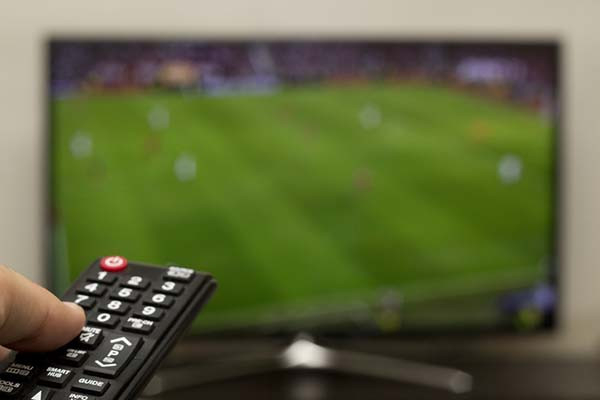
Can watching sports be bad for your health?

As the new year rolls on, sports fans rejoice! You’ve had the excitement of the college football bowl games and the national championship game, the NFL playoff games are winnowing teams down to the Super Bowl contestants, and basketball and hockey seasons are in full swing. Spring training for the upcoming Major League Baseball season is around the corner.
But hold these thoughts a moment. Watching sports — not just playing them — can be hazardous to your health. I’ve seen it firsthand while working in a walk-in clinic near Fenway Park, where people would show up bleeding from cuts that needed stitches (from trips and falls at the stadium), broken bones (from trying to catch a foul ball or an altercation with another fan), and dehydration.
Most of these injuries weren’t life-threatening. But there’s evidence that the health impact of sports spectatorship can be far more serious for some of us — and, perhaps, underappreciated.
What are the health risks of watching live sports?
When you’re watching games in person, some risks are related to the weather and other fans. For example:
- Watching a baseball game in the summer for hours may lead to heat stroke or dehydration.
- Live winter football games may raise the risk of hypothermia, frostbite, or other cold-related problems.
- Stampedes, riots, and brawls between rival fans watching soccer matches are not rare and may actually be on the rise.
- And, as mentioned, spectators of live sports can be injured by balls hit into the stands or other flying objects such as bats, pucks, or golf balls.
How could watching sports on TV boost health risks?
Doctors and nurses often describe how quiet things get in the emergency room during a World Series game or the Super Bowl. But once the game ends, it tends to get much busier. One theory is that people with chest pain, trouble breathing, or other symptoms of a potentially serious problem who ordinarily would have reported to the emergency room right away may delay seeking care until after the game.
Of course, there’s another possibility: the game itself — especially if a game is close and particularly exciting — might cause enough stress on the body that heart attacks, strokes, or other dangerous conditions develop.
Research supporting the idea that watching sports can negatively affect your health includes:
- Older studies have linked hospital admissions for heart failure and cardiac arrest with watching sporting events.
- A 2017 study found that spectators of Montreal Canadiens hockey games experienced a doubling of their heart rate during games. The effect was more pronounced for live games than televised games, but even the latter experience led to faster heart rates similar to the effect of moderate exercise.
- A 2022 study found that hospital admissions for cardiovascular problems jumped 15% during and just after World Cup soccer games.
Together, these studies suggest that watching sports can be stressful enough to trigger dangerous cardiovascular events.
It’s worth emphasizing that most people watching sports enjoy it and do not experience any health problems related to the game. But these studies suggest that spectating may carry some small risk, similar to what might accompany moderate or vigorous exercise. This may be most relevant for people who are older or who already have cardiovascular disease.
What’s a sports fan to do?
One common recommendation is to remember that it’s only a game. Of course, if you care a lot about sports or a particular team, that advice is unlikely to help. A second is to get regular exercise. Staying physically active strengthens the heart and lowers blood pressure, which could help ward off some of the health risks described above.
Five additional game-day precautions are:
- Avoid overeating, especially salty junk food. For some, overindulging in food, drink, and salt can stress the heart or trigger heart failure.
- Be prepared for the weather. Check the forecast. If you’re planning to watch a game in the cold, dress in layers, use hand warmers, and drink warm fluids. If you’re going to be out in the sun, use sunscreen liberally, wear a hat, and hydrate well.
- If you have cardiovascular disease, don’t forget to take your medications, especially if there’s a big game coming up. And if you develop worrisome symptoms, such as chest pain or trouble breathing, seek medical attention right away. Don’t wait till the game ends!
- Stay hydrated and moderate your alcohol intake. Stay well-hydrated by drinking water, especially if you’re out in the heat for hours. Although beer is a liquid, it’s also a diuretic, meaning it can make you urinate more and lose more fluids than other beverages.
- Stay alert at live events. Give yourself a fighting chance of getting out of the way of a line-drive foul ball or an errant bat that’s slipped out of the batter’s hands during a swing.
The bottom line
I can attest to many upsides of watching sports: the excitement of competition and the bonding and camaraderie with likeminded friends, family, and other fans. And perhaps watching sports might improve your health if sports spectatorship sparks sports participation.
While watching sports has been linked to certain health risks, the overall risk is likely low for most people. And you can take steps to reduce this. The health risks of spectatorship only rarely require giving up watching a favorite team. So, put on your team jersey, cheer your team on to victory, and stay healthy while you’re at it. Oh, and watch out for outraged fans or flying bats.
About the Author

Robert H. Shmerling, MD, Senior Faculty Editor, Harvard Health Publishing; Editorial Advisory Board Member, Harvard Health Publishing
Dr. Robert H. Shmerling is the former clinical chief of the division of rheumatology at Beth Israel Deaconess Medical Center (BIDMC), and is a current member of the corresponding faculty in medicine at Harvard Medical School. … See Full Bio View all posts by Robert H. Shmerling, MD
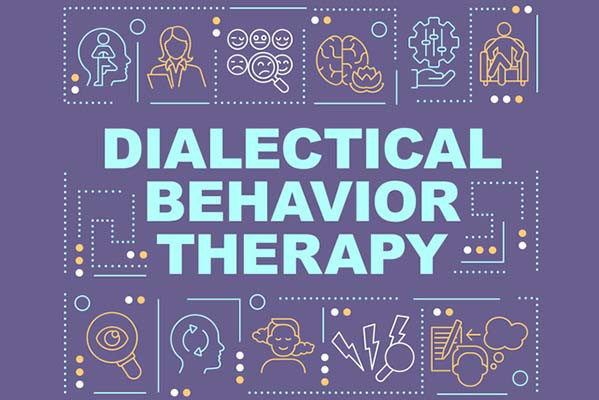
Dialectical behavior therapy: What is it and who can it help?

Feeling sad, anxious, or angry at times is a normal part of the human experience. But do you — or someone you’re close to — seem to experience these and similar emotions more quickly, more frequently, and more intensely than most people?
This problem, known as emotional dysregulation, is a hallmark of many mental health conditions, but especially borderline personality disorder. The most effective treatment for borderline personality disorder is dialectical behavior therapy (DBT), which has also been shown to help people experiencing other issues. What is DBT, who might benefit from this form of therapy, and how is it applied?
What is DBT?
DBT focuses on teaching people skills to manage intense emotions, cope with challenging situations, and improve their relationships. It encourages people to learn and use mindfulness training in practical ways.
During individual and group sessions, therapists encourage a nonjudgmental attitude and emphasize acceptance, compassion, and other aspects of mindfulness.
Who may benefit from DBT?
DBT has a proven track record for addressing the most debilitating symptoms of borderline personality disorder: self-injury and suicide threats or attempts. It is now also used to treat depression, post-traumatic stress disorder, eating disorders, and substance use disorders.
In fact, the cornerstone of DBT — the skills training — can help anyone navigate emotionally charged situations with more ease.
How can mindfulness change how people experience strong emotions?
Many people in therapy have very strong emotions that lead to negative thoughts, says Dr. Blaise Aguirre, a psychiatrist who founded the 3 East Dialectic Behavior Therapy Continuum at Harvard-affiliated McLean Hospital. “They say things like, ‘I’m stupid,’ or ‘I can’t control my anger,’ or ‘No one will ever love me,'” he says.
The mindfulness aspect of DBT teaches people to pay careful attention to the nature, quality, and volume of their thoughts. The idea is to observe these thoughts as separate from yourself without identifying with their meaning. This is the first step to addressing the impact of those thoughts, Dr. Aguirre explains.
How does DBT differ from cognitive behavioral therapy?
DBT is derived from cognitive behavioral therapy (CBT). CBT assumes that certain negative thoughts (cognitions) are distortions, and if you learn how to swap those distorted thoughts with more productive ones, you’ll be less depressed or anxious.
“But for someone with very deep emotions and convictions, telling them that their thoughts and feelings are somehow ‘wrong’ feels very invalidating,” says Dr. Aguirre. A DBT-trained therapist would instead acknowledge that the person’s thoughts make sense, given who they are and their experiences. This practice, known as validation, is a central tenet of DBT. It’s key to know that you can validate a person’s thoughts even if you don’t agree with them.
That concept touches on the core of DBT — the dialectical part. It refers to the idea that two opposite things can be true at the same time. Rather than viewing things in extremes of black and white, DBT encourages people to recognize there’s more than one way to view a situation and to try to “walk the middle path.” A classic DBT mantra is “I’m doing the best that I can in this moment, and I want to and can do better.”
What other skills does DBT rely on?
In addition to mindfulness, DBT teaches three other main skills:
- Distress tolerance is the ability to manage emotional distress in the moment, using techniques such as distraction.
- Emotion regulation involves recognizing, accepting, and managing intense emotions.
- Interpersonal effectiveness focuses on improving communication with other people to strengthen relationships and improve your self-esteem.
What does DBT entail?
Ideally, DBT includes one-on-one sessions with a therapist (who is also available between sessions for phone or text coaching). The one-on-one sessions are combined with weekly group sessions led by a therapist who teaches the specific, interconnected skills and gives homework that helps to reinforce the skills. Participants are encouraged to keep a daily diary to track their emotions, behaviors, reactions, and examples of how they’re practicing their skills.
DBT has been shown to be effective for people ranging from adolescents to older adults with a range of mental health conditions. It appears to be especially useful for adolescents, perhaps for the same reason that it’s easier to learn a language or how to play an instrument when you’re younger rather than older, says Dr. Aguirre.
Are there different options for gaining access to DBT?
Accessing the full DBT experience can be challenging for many people. The skills groups meet for one to two hours weekly for six to 12 months, which is in addition to weekly, hour-long sessions with an individual therapist. Individual therapy may cost as much as $250 to $300 per hour, and the groups are often around $100 per hour. Not all DBT providers accept insurance.
“We’re starting to recognize that the majority of people can improve just doing the skills groups and don’t need the full DBT,” says Dr. Aguirre.
But for teens who are suicidal or harming themselves, intensive DBT can help keep them out of the hospital and potentially save their lives. “If your child had cancer, you wouldn’t think twice about taking them in for chemotherapy infusions twice a week,” says Dr. Aguirre.
Another problem is that there aren’t many DBT-trained providers in less populated parts of the country. Online DBT therapy may be an option, although its effectiveness hasn’t been studied.
Is there one simple DBT tool I can try?
If a family member struggles with very strong emotions, Dr. Aguirre offers this mini-DBT lesson about validation. Situations that trigger intense emotions are often rooted in a perception of abandonment, neglect, or rejection, he says. For example, if a person believes that someone at work is avoiding them, or a romantic partner doesn’t show up on time, it can trigger a rapid rise in emotional distress.
Here’s what to avoid saying:
“You have to calm down.”
“You are making a big deal over nothing.”
“When I am upset, I make myself a nice cup of tea and that should help you, too.”
Here’s what you can say instead:
“You seem really upset. Do you want to talk about it, or do you want some time by yourself?’
“You seem very sad. I am around if you want to talk.”
“Is there anything that I can do to help?”
“These types of statements validate the person’s feelings and convey that you’re listening and open to helping, if that’s what they want,” says Dr. Aguirre.
About the Author

Julie Corliss, Executive Editor, Harvard Heart Letter
Julie Corliss is the executive editor of the Harvard Heart Letter. Before working at Harvard, she was a medical writer and editor at HealthNews, a consumer newsletter affiliated with The New England Journal of Medicine. She … See Full Bio View all posts by Julie Corliss
About the Reviewer

Howard E. LeWine, MD, Chief Medical Editor, Harvard Health Publishing
Dr. Howard LeWine is a practicing internist at Brigham and Women’s Hospital in Boston, Chief Medical Editor at Harvard Health Publishing, and editor in chief of Harvard Men’s Health Watch. See Full Bio View all posts by Howard E. LeWine, MD

What is a tongue-tie? What parents need to know

The tongue is secured to the front of the mouth partly by a band of tissue called the lingual frenulum. If the frenulum is short, it can restrict the movement of the tongue. This is commonly called a tongue-tie.
Children with a tongue-tie can’t stick their tongue out past their lower lip, or touch their tongue to the top of their upper teeth when their mouth is open. When they stick out their tongue, it looks notched or heart-shaped. Since babies don’t routinely stick out their tongues, a baby’s tongue may be tied if you can’t get a finger underneath the tongue.
How common are tongue-ties?
Tongue-ties are common. It’s hard to say exactly how common, as people define this condition differently. About 8% of babies under age one may have at least a mild tongue-tie.
Is it a problem if the tongue is tied?
This is really important: tongue-ties are not necessarily a problem. Many babies, children, and adults have tongue-ties that cause them no difficulties whatsoever.
There are two main ways that tongue-ties can cause problems:
- They can cause problems with breastfeeding by making it hard for some babies to latch on well to the mother’s nipple. This causes difficulty with feeding for the baby and sore nipples for the mother. It doesn’t happen to all babies with a tongue-tie; many of them can breastfeed successfully. Tongue-ties are not to blame for gassiness or fussiness in a breastfed baby who is gaining weight well. Babies with tongue-ties do not have problems with bottle-feeding.
- They can cause problems with speech. Some children with tongue-ties may have difficulty pronouncing certain sounds, such as t, d, z, s, th, n, and l. Tongue-ties do not cause speech delay.
What should you do if think your baby or child has a tongue-tie?
If you think that your newborn is not latching well because of a tongue-tie, talk to your doctor. There are many, many reasons why a baby might not latch onto the breast well. Your doctor should take a careful history of what has been going on, and do a careful examination of your baby to better understand the situation.
You should also have a visit with a lactation specialist to get help with breastfeeding — both because there are lots of reasons why babies have trouble with latching on, and also because many babies with a tongue-tie can nurse successfully with the right techniques and support.
Talk to your doctor if you think that a tongue-tie could be causing problems with how your child pronounces words. Many children just take some time to learn to pronounce certain sounds. It is also a good idea to have an evaluation by a speech therapist before concluding that a tongue-tie is the problem.
What can be done about a tongue-tie?
When necessary, a doctor can release a tongue-tie using a procedure called a frenotomy. A frenotomy can be done by simply snipping the frenulum, or it can be done with a laser.
However, nothing should be done about a tongue-tie that isn’t causing problems. While a frenotomy is a relatively minor procedure, complications such as bleeding, infection, or feeding difficulty sometimes occur. So it’s never a good idea to do it just to prevent problems in the future. The procedure should only be considered if the tongue-tie is clearly causing trouble.
It’s also important to know that clipping a tongue-tie doesn’t always solve the problem, especially with breastfeeding. Studies do not show a clear benefit for all babies or mothers. That’s why it’s important to work with a lactation expert before even considering a frenotomy.
If a newborn with a tongue-tie isn’t latching well despite strong support from a lactation expert, then a frenotomy should be considered, especially if the baby is not gaining weight. If it is done, it should be done early on and by someone with training and experience in the procedure.
What else should parents know about tongue-tie procedures?
Despite the fact that the evidence for the benefits of frenotomy is murky, many providers are quick to recommend them. If one is being recommended for your child, ask questions:
- Make sure you know exactly why it is being recommended.
- Ask whether there are any other options, including waiting.
- Talk to other health care providers on your child’s care team, or get a second opinion.
About the Author

Claire McCarthy, MD, Senior Faculty Editor, Harvard Health Publishing
Claire McCarthy, MD, is a primary care pediatrician at Boston Children’s Hospital, and an assistant professor of pediatrics at Harvard Medical School. In addition to being a senior faculty editor for Harvard Health Publishing, Dr. McCarthy … See Full Bio View all posts by Claire McCarthy, MD
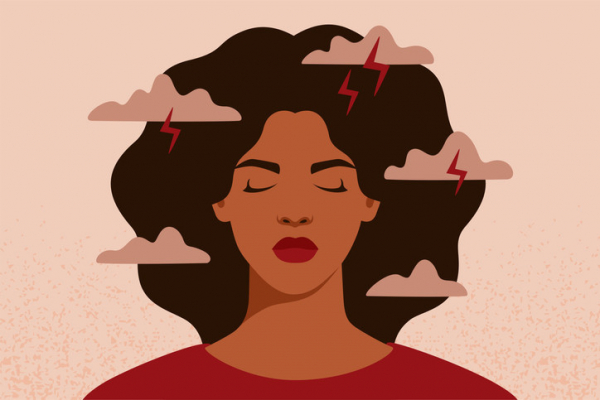
Which migraine medications are most helpful?

If you suffer from the throbbing, intense pain set off by migraine headaches, you may well wonder which medicines are most likely to offer relief. A recent study suggests a class of drugs called triptans are the most helpful option, with one particular drug rising to the top.
The study drew on real-world data gleaned from more than three million entries on My Migraine Buddy, a free smartphone app. The app lets users track their migraine attacks and rate the helpfulness of any medications they take.
Dr. Elizabeth Loder, professor of neurology at Harvard Medical School and chief of the Division of Headache at Brigham and Women’s Hospital, helped break down what the researchers looked at and learned that could benefit anyone with migraines.
What did the migraine study look at?
Published in the journal Neurology, the study included self-reported data from about 278,000 people (mostly women) over a six-year period that ended in July 2020. Using the app, participants rated migraine treatments they used as “helpful,” “somewhat helpful,” or “unhelpful.”
The researchers looked at 25 medications from seven drug classes to see which were most helpful for easing migraines. After triptans, the next most helpful drug classes were ergots such as dihydroergotamine (Migranal, Trudhesa) and anti-emetics such as promethazine (Phenergan). The latter help ease nausea, another common migraine symptom.
“I’m always happy to see studies conducted in a real-world setting, and this one is very clever,” says Dr. Loder. The results validate current guideline recommendations for treating migraines, which rank triptans as a first-line choice. “If you had asked me to sit down and make a list of the most helpful migraine medications, it would be very similar to what this study found,” she says.
What else did the study show about migraine pain relievers?
Ibuprofen, an over-the-counter pain reliever sold as Advil and Motrin, was the most frequently used medication in the study. But participants rated it “helpful” only 42% of the time. Only acetaminophen (Tylenol) was less helpful, helping just 37% of the time. A common combination medication containing aspirin, acetaminophen, and caffeine (sold under the brand name Excedrin) worked only slightly better than ibuprofen, or about half the time.
When researchers compared helpfulness of other drugs to ibuprofen, they found:
- Triptans scored five to six times more helpful than ibuprofen. The highest ranked drug, eletriptan, helped 78% of the time. Other triptans, including zolmitriptan (Zomig) and sumatriptan (Imitrex), were helpful 74% and 72% of the time, respectively. In practice, notes Dr. Loder, eletriptan seems to be just a tad better than the other triptans.
- Ergots were rated as three times more helpful than ibuprofen.
- Anti-emetics were 2.5 times as helpful as ibuprofen.
Do people take more than one medicine to ease migraine symptoms?
In this study, two-thirds of migraine attacks were treated with just one drug. About a quarter of the study participants used two drugs, and a smaller number used three or more drugs.
However, researchers weren’t able to tease out the sequence of when people took the drugs. And with anti-nausea drugs, it’s not clear if people were rating their helpfulness on nausea rather than headache, Dr. Loder points out. But it’s a good reminder that for many people who have migraines, nausea and vomiting are a big problem. When that’s the case, different drug formulations can help.
Are pills the only option for migraine relief?
No. For the headache, people can use a nasal spray or injectable version of a triptan rather than pills. Pre-filled syringes, which are injected into the thigh, stomach, or upper arm, are underused among people who have very rapid-onset migraines, says Dr. Loder. “For these people, injectable triptans are a game changer because pills don’t work as fast and might not stay down,” she says.
For nausea, the anti-emetic ondansetron (Zofran) is very effective, but one of the side effects is headache. You’re better off using promethazine or prochlorperazine (Compazine), both of which treat nausea but also help ease headache pain, says Dr. Loder.
Additionally, many anti-nausea drugs are available as rectal suppositories. This is especially helpful for people who have “crash” migraines, which often cause people to wake up vomiting with a migraine, she adds.
What are the limitations of this migraine study?
The data didn’t include information about the timing, sequence, formulation, or dosage of the medications. It also omitted two classes of newer migraine medications — known as gepants and ditans — because there was only limited data on them at the time of the study. These options include
- atogepant (Qulipta) and rimegepant (Nurtec)
- lasmiditan (Reyvow).
“But based on my clinical experience, I don’t think that any of these drugs would do a lot better than the triptans,” says Dr. Loder.
Another shortcoming is the study population: a selected group of people who are able and motivated to use a migraine smartphone app. That suggests their headaches are probably worse than the average person, but that’s exactly the population for whom this information is needed, says Dr. Loder.
“Migraines are most common in young, healthy people who are trying to work and raise children,” she says. It’s good to know that people using this app rate triptans highly, because from a medical point of view, these drugs are well tolerated and have few side effects, she adds.
Are there other helpful takeaways?
Yes. In the study, nearly half the participants said their pain wasn’t adequately treated. A third reported using more than one medicine to manage their migraines.
If you experience these problems, consult a health care provider who can help you find a more effective therapy. “If you’re using over-the-counter drugs, consider trying a prescription triptan,” Dr. Loder says. If nausea and vomiting are a problem for you, be sure to have an anti-nausea drug on hand.
She also recommends using the Migraine Buddy app or the Canadian Migraine Tracker app (both are free), which many of her patients find helpful for tracking their headaches and triggers.
About the Author

Julie Corliss, Executive Editor, Harvard Heart Letter
Julie Corliss is the executive editor of the Harvard Heart Letter. Before working at Harvard, she was a medical writer and editor at HealthNews, a consumer newsletter affiliated with The New England Journal of Medicine. She … See Full Bio View all posts by Julie Corliss
About the Reviewer
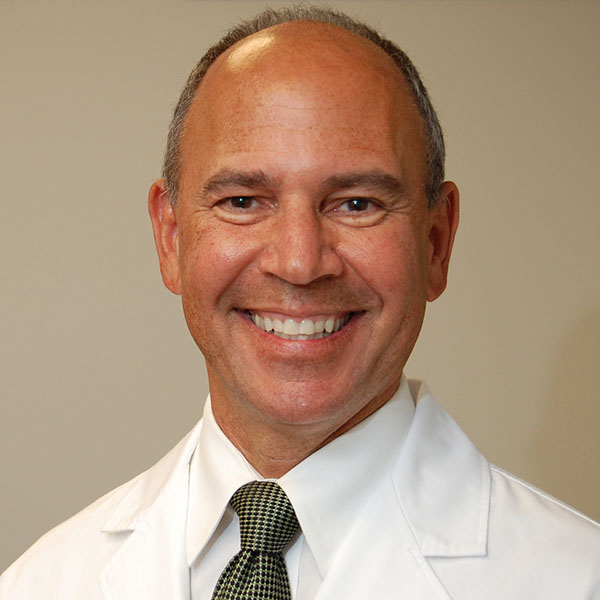
Howard E. LeWine, MD, Chief Medical Editor, Harvard Health Publishing
Dr. Howard LeWine is a practicing internist at Brigham and Women’s Hospital in Boston, Chief Medical Editor at Harvard Health Publishing, and editor in chief of Harvard Men’s Health Watch. See Full Bio View all posts by Howard E. LeWine, MD